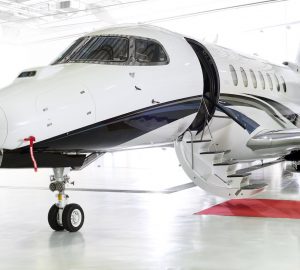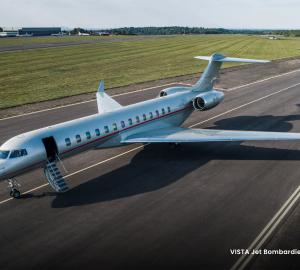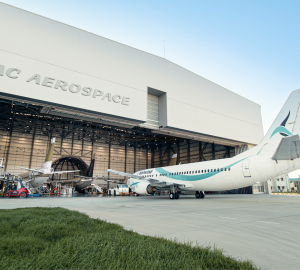Drukair: Bhutan Tourism’s Steady Partner
Drukair is helping the Kingdom of Bhutan achieve its bid for sustainable, quality tourism.
Interview by Luke Elijah, photos courtesy of Department of Tourism, Bhutan
“While those working in the tourism sector represent us at the forefront, the entire nation is the tourism industry, and every Bhutanese is a host.” – Dorji Dhradhul
Drukair – Royal Bhutan Airlines is the Kingdom of Bhutan’s premier airline. The national carrier operates domestic and international flights that connect the Kingdom with various destinations across Asia. Its CEO, Tandi Wangchuk, a seasoned industry professional with over 32 years of aviation experience, has played a pivotal role in revolutionising Drukair’s overall operational and strategic direction since he joined the company as their chief executive back in 2015. Under Wangchuk’s keen and astute leadership, Drukair has seen vast advancements in its service offerings, fleet management, route expansions, and overall organisational efficiency.
Before he became Director General of the Department of Tourism in Bhutan in January 2019, Dorji Dhradhul served as Dzongda (Governor) of Gasa district for almost four years and has worked in various capacities in the fields of agriculture research, policymaking, and development.

Dhradhul was also the founding Director of the Department of Agriculture Marketing and Cooperatives, and founding Registrar of Cooperatives in Bhutan. He also authored Escapades Awakenings, a novel that presents a uniquely different take on life in Bhutan, moving beyond the clichéd descriptions and traditional tales to lift the veil of misty romanticism and offer a glimpse into the stark realities of its society. On top of all that, Dhradhui was also awarded the ‘Best Professional – Destination Marketing’ by the Pacific Area Travel Writers’ Association (PATWA) back in 2020.
In an exclusive joint interview with Jetgala, Wangchuk and Dhradhul talked about the challenges and opportunities in propelling the tourism industry in the kingdom.

What are the differences between Drukair and Bhutan Airlines? Are both of them official national carriers? What routes do they cover and serve?
Bhutan Airlines, known as Tashi Air Private Limited is the only privately owned airline in Bhutan. Whereas Drukair is a state-owned corporation and is the official national carrier. Both airlines deliver exceptional services and fly roughly the same routes. Their pricing are also comparatively similar.
With its headquarters in Paro, Drukair – Royal Bhutan Airlines presently operates scheduled flights to nine international destinations spanning five countries within the South Asian region from its operational base at Paro International Airport. Additionally, Drukair flies to three domestic destinations within Bhutan and extends its offerings to include helicopter services, thus expanding its scope beyond fixed-wing operations.
Paro International Airport has a reputation of being the world’s most dangerous airport to land in. Is it true that only 26 commercial pilots in the world are certified and licensed to land at Paro airport?
We do not agree with the term ‘world’s scariest and most dangerous airport” that is linked to the Paro International Airport as we have a high safety record of zero accidents. We can attest to the fact that the operation to land safely at the airport is indeed challenging due to the unique visual landing approach into Paro International Airport where you only get to see and view the runway at the very short final landing time.
As a precautionary safety measure, the Bhutan Civil Aviation Authority (BCAA) has a policy that only properly trained and experienced captains are allowed to land at Paro International Airport. In Bhutan, we have a total of 26 of these esteemed captains that are certified to safely land a plane at Paro.

Is there anywhere in Bhutan that private aviators are allowed to land their private jets at? What are the current restrictions?
Private aviators are allowed to land in Paro International Airport with prior approval of landing clearances from the Bhutan Civil Aviation Authority (BCAA). All applications for landing clearances should be routed through the BCAA-approved ground handling agent.
Certain requirements have to be fulfilled by the operating crew to operate into and within Bhutan due to the challenging operating environment of Bhutan’s mountainous terrains. The flight must be accompanied by a guide pilot on board who has been flying in and out of Bhutan Aerodrome on a regular basis.
Where a guide pilot is required, the flight operator shall communicate with the approved ground handling agent for the arrangement. The operating crew must have flown in and out of that particular Aerodrome in Bhutan (for both runways) within the preceding 90 days and needs to be competent to operate at that Aerodrome. Alternatively, the operating crew must have undergone a simulator familiarisation training of Aerodrome procedures for the particular aerodrome at a BCAA-approved training organisation (ATO) conducted by a BCAA-approved TRE within the preceding 30 days of the intended flight. However, this option is only available for those fleets for which our TREs are approved.

Where can Bhutanese citizens and residents go if they wish to train to become a pilot, or perhaps to take up flying lessons?
Since Bhutan does not have any flying school, the Bhutan Civil Aviation Authority accepts the conversion of the Commercial Pilot License issued by other ICAO member states who are able to legally issue CPLs to proper candidates that have fulfilled the minimum ICAO requirements in order to obtain their Commercial Pilot License.

What is the future of the aviation and aerospace industry for Bhutan going to be like? Are there any upcoming developments or expansions in the pipeline? Are there plans for an airport upgrade or new airports?
Bhutan has recently announced the upcoming future development of the Gelephu Mindfulness City which is a special administrative region located in south Bhutan. Bordering India, this new city will be slightly larger in size than Singapore, and will be specially focused on sustainability, mindfulness, and harmony. It will be the world’s first mindfulness city. With this news, there are now future plans and proposals to develop a new airport over in Gelephu. In the meantime, the Gelephu Domestic Airport will be converted and gazetted into an international airport.

Why should people visit Bhutan?
Whether one is visiting Bhutan for business or simply seeking a peaceful vacation, Bhutan has something for everyone. A country with its breathtaking landscapes and welcoming locals, Bhutan offers an ideal destination to disconnect and forge genuine connections in the fast-paced world dominated by constant connectivity and technology.
Visitors can immerse themselves in the tranquillity of Bhutan as they visit temples where monks engage in peaceful prayers and rituals. Moreover, they can also embark on refreshing hikes along pristine mountain trails, allowing nature to rejuvenate their spirit and awaken a sense of wonder within them. Bhutan invites visitors to slow down, to savour each moment, and to embrace the extraordinary experiences that it offers.
From culture, nature, and spirituality to gourmet, costumes, and adventure, visitors will be able to disconnect from the noise of the world and discover the special treasures that make Bhutan an unforgettable destination.

Can you elaborate on Bhutan’s tourism policy of “High Value, Low Volume”? Exactly what travellers demographic do you wish to attract to come to Bhutan?
Bhutan’s policy of “High Value, Low Volume tourism has existed since we started welcoming guests to our country back in 1974. However, its intent and spirit have been watered down over the years. Typically, “high value” is understood as exclusive high-end products and extravagant recreational facilities and, “low volume” does not mean limiting the number of visitors. We would appreciate everyone who visits us to treasure our values, while we also learn as much from them in return.
If a mutual exchange of cultures and ideas is what you are searching for, then there is no limit or restriction. The best way to realise this vision are on our youths and professionals in the tourism industry. While those working in the tourism sector represent us at the forefront, the entire nation is the tourism industry, and every Bhutanese is a host.
Bhutan does not see tourists in terms of class or income level or type of demographic; we are really looking towards attracting discerning visitors who are conscious travellers, as well as those who believe in our vision.
Moreover, we are really focusing on establishing Bhutan as a travel destination for everyone; a destination where you do not only just visit but view and experience it like a life sojourn. There is no limit on the number of visitors we welcome to Bhutan. But our approach to tourism is about being responsible, sustainable, and careful as we are guardians of a rich culture that needs to be protected.

Which parts of Bhutan would you recommend for first time tourists to explore, and how many days is an ideal length of stay in each part of the country?
Bhutan is a mesmerising destination with breathtaking landscapes, rich culture, and warm hospitality. Every part of Bhutan offers its own unique charm and can provide a well-rounded experience of the country.
In western Bhutan, places like Thimphu, Paro, and Punakha are popular among visitors due to their close proximity to each other, and for their stunning dzongs (fortresses), monasteries, and scenic beauty. Similarly, in eastern and central Bhutan, places like Trashigang, Lhuentse, Trashiyangtse, and Bumthang offer a glimpse into the country’s less-visited regions. These areas boast pristine natural beauty, with lush forests, cascading waterfalls, and charming villages.

Visitors can immerse themselves in the authentic culture of Bhutan by participating in local festivals, visiting traditional markets, and exploring ancient monasteries. For an ideal length of stay, spending around five to six nights in western Bhutan would allow visitors to explore the key highlights comfortably.
Similarly, allocating seven to eight nights to eastern and central Bhutan would provide sufficient time to delve into its hidden gems and experience the tranquil ambiance of the region. Overall, while western Bhutan may be more frequented by visitors, eastern and central Bhutan and even the southern part of Bhutan offer a unique opportunity to witness the country’s untouched beauty and authenticity. Regardless of which part you choose to explore, Bhutan promises an unforgettable journey filled with awe-inspiring scenery, cultural discoveries, and warm encounters with its friendly people.

Why was there a decision to lower the Sustainable Development Fee (SDF) for visitors to Bhutan?
The Royal Government of Bhutan decided to decrease the daily Sustainable Development Fee (SDF) to boost the tourism sector. This is in view of the important role of the tourism sector in generating employment and realising the potential for spillover benefits for ancillary industries, as well as to boost overall economic growth. After reopening Bhutan in September 2022, the SDF for foreign guests was raised to USD 200 per person, per night, but last year the government decided to revise it back down again to USD 100 per person, per night in view of helping to stimulate the tourism sector. This discount is effective until August 2027.
Not To Be Missed When Visiting Bhutan

- Homestay with a Bhutanese family for a glimpse of the authentic Bhutanese way of life and access to their religion, cultures, ceremonies and authentic food.
- Paro Taktsang (Tiger’s Nest), a Bhutanese monastery perched on cliff overlooking Paro valley. Legend has it that Guru Rinpoche meditated there in the 7th century after flying to the site on a tigress. Established in 1692, the monastery is a testament to Bhutanese architectural elegance.
- Haa and Gangtey Valleys in western Bhutan, as well as Bumthang in central Bhutan for an array of outdoor activities.
- The largest sitting Buddha statue in Kuenselphodrang, a majestic monument that is a symbol of peace and prosperity.
- Punakha Dzong at the confluence of the Pho Chu and Mo Chu rivers. This stunning fortress-monastery is architecturally magnificent and holds great historical and cultural significance as the former capital of Bhutan.
- Phobjikha Valley which serves as a winter nesting ground for black necked cranes, providing a rare opportunity for visitors to observe them in their natural habitat.
- Chimi Lhakhang, also known as Temple of Fertility in Punakha. Dedicated to the eccentric Buddhist Saint Drukpa Kuenley, this temple is believed to bless couples with fertility and good fortune.
You May Also Like:







